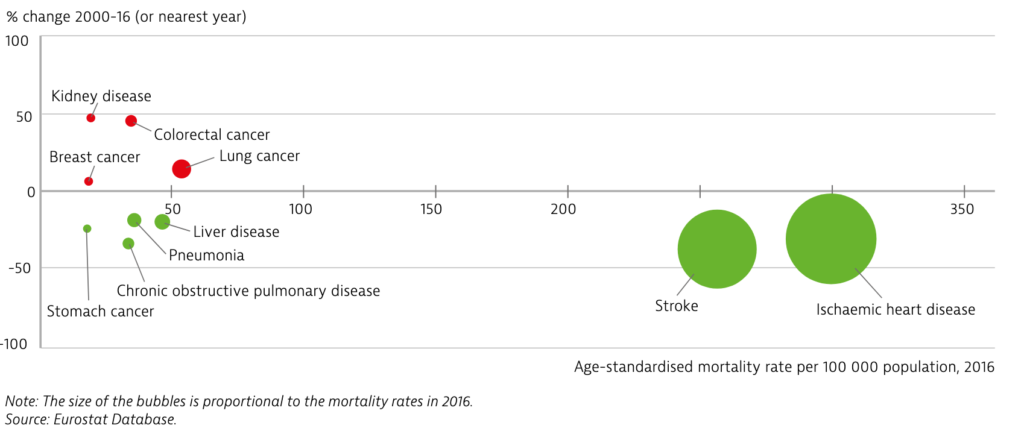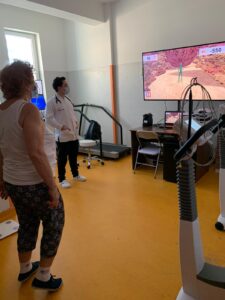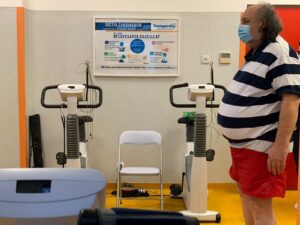vCare to help answering crucial needs in Romania
Cardiovascular mortality is a critical public health problem in Romania. It is three times higher than in any other state of the European Union. With a reduced average life expectancy of 8 years in men and 5 years in women compared with the European figures, the prevention of cardiovascular disease is currently one of the top priorities of the Romanian Ministry of Health. The main causes of hospitalisation among cardiovascular patients are heart failure and ischaemic heart disease with an annual incidence of 4.7% and 5-7% respectively of the country’s population.

Figure: Cardiovascular diseases take the largest toll on mortality in Romania, from: https://www.euro.who.int/__data/assets/pdf_file/0009/419472/Country-Health-Profile-2019-Romania.pdf
Stroke and ischaemic heart disease remain the main causes of mortality in Romania. Cardiac rehabilitation is now recommended to every eligible patient diagnosed with heart failure and ischemic heart disease in the country. However, the absence of free-of-charge ambulatory rehabilitation puts Romania in the last place in Europe in the management of secondary prevention of these life-threatening pathologies.
Covid-19 speeds up the shift towards new approaches
The Covid-19 pandemic has acted as a turning point for the acceleration of telemedicine integration in the medical services area. The fear of human interaction, and especially hospital-patient interaction, has forced the Romanian government, medical providers, and patients to choose technology as a bridge to disease management and prevention.
Now, more than ever, medical staff are open to use technology to diagnose and prevent cardiovascular disease. Sustained by the government promise of cost reimbursement, we are on a path of developing cardiac rehabilitation programmes which will dramatically decrease the rates of hospital readmission and mortality of patients.
Romania focuses on testing the technologies in a living lab

In the vCare project, we aim to build, through machine learning, software which will allow patients to perform cardiac rehabilitation in the comfort of their own homes. We are now at the step of working in a living lab. The testing of the integrated system is taking place at the Bagdasar-Arseni Emergency Clinical Hospital in Bucharest, where the vCare team has created all the conditions necessary for the optimal development of the project. In a bright and spacious room, we have put together three zones: an exercise area (consisting of 2 cycloergometers[1], a smart TV, and sensors), a relaxing corner (with a couch, coffee table, hallstand, and mini-fridge), and a fully equipped bathroom.

We have conducted an assessment to evaluate users’ perceptions of the integration of the solution in their daily lives. Preliminary analysis in the living lab highlights a number of aspects related to the patient interaction with the vCare system which will need to be better taken into account. For now, the laboratory environment makes it easy for the patient, as every sensor and game is already installed and there is human support available at any time. The technical implementation is proving to be successful. We still need, however, to identify the barriers the patients will face in the home environment, when they will be in a position to entirely interact with the system by themselves. It is therefore important to reflect on all the complementary measures that need to be taken in order to provide the patient with a secure and trusted environment.
Positive developments
Patients are positive about the vCare system, and have shown an interest in, and readiness, to change in order to make use of vCare technology, including the vCoach avatar. They feel reassured knowing that will not be ‘left alone’ when they return home after their discharge from the hospital. They see the vCoach avatar as a truly supportive partner, and want to know how to interact with it. They understand that their future treatment will not be limited to taking pills. They realise that, in the absence of corrections to cardiovascular risk factors, the efforts of their medical team will not have been in vain.
[1] Stationary exercise bicycle equipped with an ergometer instrument that measures the amount of work done by the individual peddling the bike. The term “ergometer” refers to the science of ergometry, a discipline concerned with measuring the amount of physical work done by the human body during specific activities.
